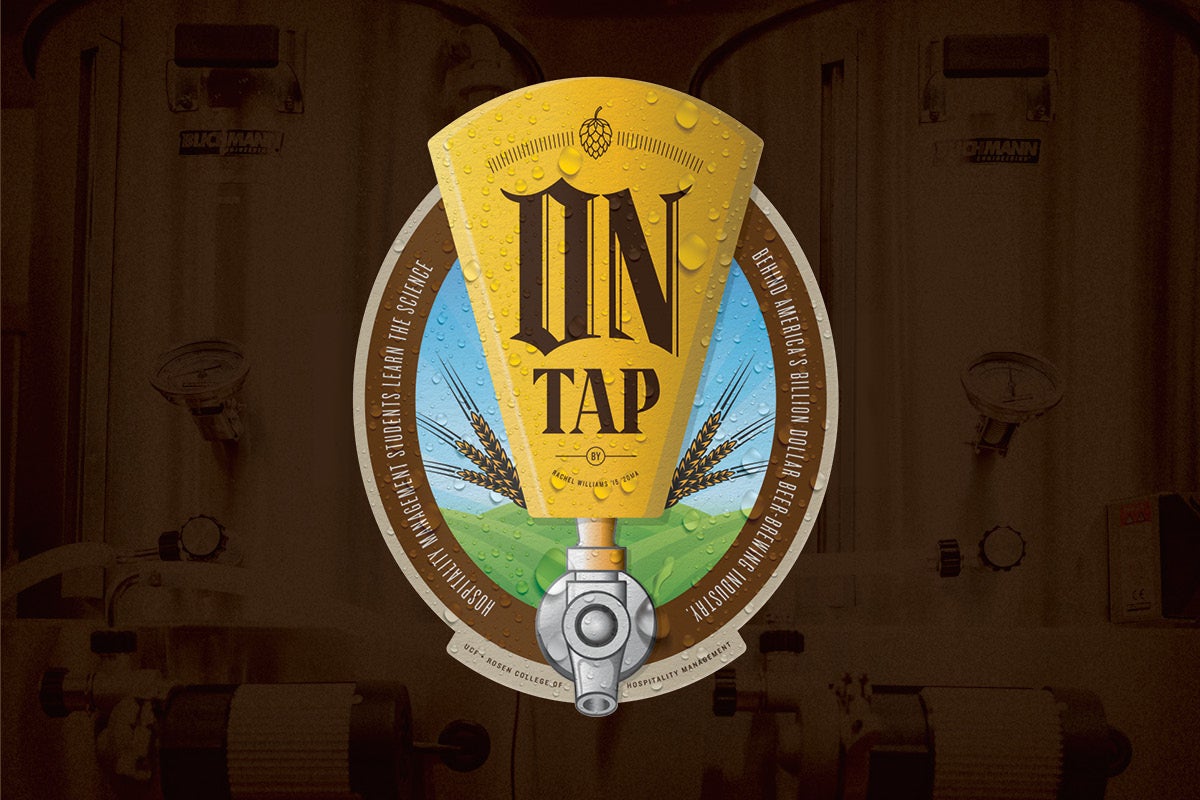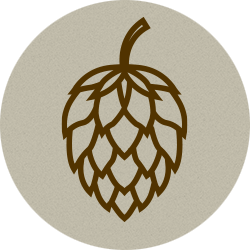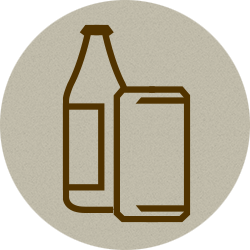
On Tap
Fall 2021 | By Rachel Williams ’15 ’20MA
On any given day at UCF, students can be found in labs conducting chemistry experiments. Now, that includes brewing beer.
Students have a chance to learn about the ancient craft thanks to two brand-new stainless steel 15-gallon Blichmann kettles and a fermenter installed at the Rosen College of Hospitality Management this semester. They’ve steeped grain, combined it with yeast, and aerated the mixture so that it fermented and turned into beer over a matter of weeks.
Even though this process is thousands of years old, these future brewmasters are learning about the process to understand beer’s place in the modern world of hospitality management.
“As long as humans have been living in small groups, they’ve been brewing in some capacity,” says chef Jonathan Judy, an associate instructor at the Rosen College of Hospitality Management who teaches the course Quality Brewing and Fine Beer.
It’s as much a part of American history as the Mayflower itself — which landed near Plymouth Rock in part because the ship was running out of its beer supply, which was safer than its drinking water.
Fast forward to 2021, and beer is a main ingredient of American culture. Last year alone the craft beer industry contributed $62.1 billion and more than 400,000 jobs to the U.S. economy, according to the Brewers Association.
“What we’re seeing now in the industry is food and beer pairings are rising to the same level as food and wine pairings,” Judy says.
That popularity is why students are learning about beer in their education to become hospitality managers. In his class, Judy takes students through the process — beginning with beer’s origins to brewing a batch themselves that is then used for class tastings.
Here are some insights Judy learned about beer during his career.
Change is Brewing in the Industry
Brewing has been a leading manufacturing industry in America since the early 1900s. It wasn’t until the ’70s and ’80s that the niche market of craft beer began in people’s garages. In the last 15 years, Judy says we’ve seen a significant change in the demand for craft beer because consumers are increasingly interested in quality and supporting local. It’s caught the attention of the big national brewers that recognize craft brewers have come after the market share.
Rosen Sets the Standard
UCF students learn from industry professionals in their education to become hospitality managers. Take Judy, who starting cooking as an apprentice in 1990 at 16 years old, was a sous chef at a restaurant and brewery in Winter Park, and over time worked his way up to executive chef. He’s been a hobbyist brewer since the ’90s, and recently became a level-one Cicerone — a beer certification similar to the sommelier certification in wine.
“What I’ve found is that brewing is just like cooking,” says Judy. “It’s a transformative process, and I’ve always found it fascinating.”
Passing the Taste Test
The craft of making beer means being creative with it, but within reason. Beer is made of just four ingredients — grain, hops, yeast and water. “It’s fascinating how you can take those four ingredients and make something different every time,” Judy says. A good beer should have a refreshing flavor, a pleasant aftertaste and a taste that aligns with its style, he says.
Finding the Right Beer
Judy says the best moments in class are when he witnesses the “aha!” moment for his students. “I’ve had students who didn’t like beer or thought they wouldn’t enjoy it but then they do. I think for most people who don’t like beer, it’s because they haven’t found the one for them yet,” he says. When trying to find the right beer, Judy says consider what flavor profiles you like in food. For those who like bitter flavors, Judy suggests trying an India Pale Ale (IPA). For coffee lovers, try stouts. For those who want something light, Judy suggests a lager, wheat ale or Belgian-style white ale.
Making the Grade
Reinheitsgebot is a German term that marks the standard as the country’s beer purity law. In place since 1516, the law requires that nothing other than barley, hops, yeast and water be used to produce German beer. “That’s why German beer tends to have much less going on than Belgium beer, for example, which is made right next door but not constrained to the same purity law,” Judy says. UCF students this semester brewed a beer in line with the Reinheitsgebot law.
Well-Rounded Education
Quality Brewing and Fine Beer is one of 10 courses that students can take to earn a certificate in beverage management that started this semester. Courses include supply chain and logistics, law and management to tasting classes with beer and wine, which is taught in the Anheuser-Busch Beer & Wine Lab at Rosen. UCF students ages 18-20 (with instructor approval) or older can take these classes, many of which are also offered online.
Stages of Brewing Beer

Making Wort
In this process, grains are steeped in hot water to extract the glucose (sugars). Once this process is complete, the solid grains are discarded, leaving a liquid solution called wort. This is the raw material for the beer.

Adding Flavors
Hops and other flavors are added to the wort, giving each craft beer its unique taste. These extracts are dissolved into the solution prior to fermentation. Common flavors include fruits, spices, coffee and even chocolate.

Fermenting
During fermentation, brewer’s yeast is added to the wort. Over time, the yeast consumes the glucose, converting it to ethyl alcohol and carbon dioxide.

Bottling
In home or small-batch brewing, sugar tablets are added to bottles before sealing. The remaining yeast in the liquid converts the sugar to carbon dioxide. The bottle becomes pressurized, forcing more of the gas to dissolve in the liquid.